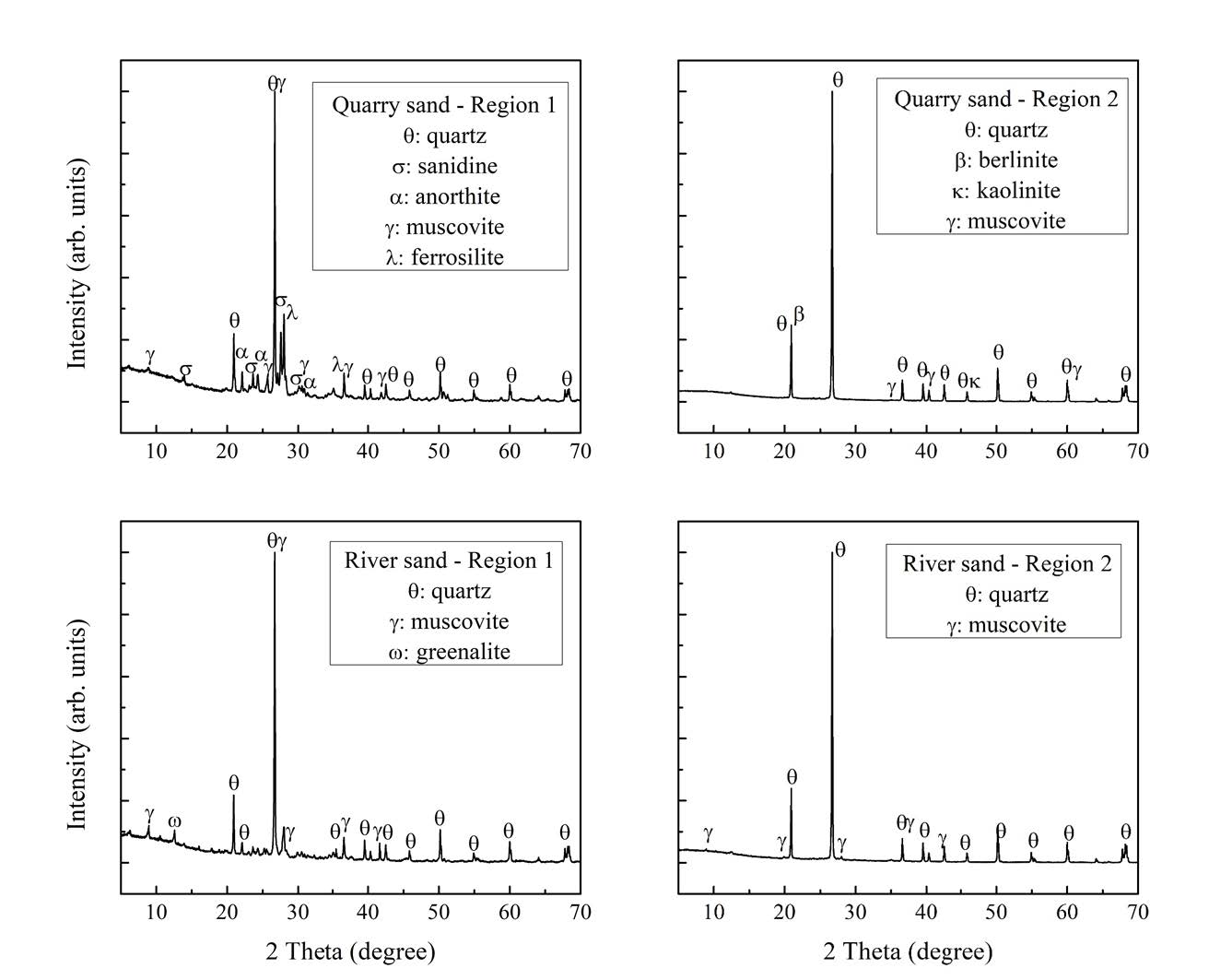Moisture correction in mixtures using innovative thermogravimetric technique to determine water absorption in different Colombian fine aggregates
Corrección de humedad en mezclas mediante innovadora técnica termogravimétrica para determinar la absorción de agua en diferentes agregados finos colombianos


This work is licensed under a Creative Commons Attribution-NonCommercial-NoDerivatives 4.0 International License.
Copyright statement
The authors exclusively assign to the Universidad EIA, with the power to assign to third parties, all the exploitation rights that derive from the works that are accepted for publication in the Revista EIA, as well as in any product derived from it and, in in particular, those of reproduction, distribution, public communication (including interactive making available) and transformation (including adaptation, modification and, where appropriate, translation), for all types of exploitation (by way of example and not limitation : in paper, electronic, online, computer or audiovisual format, as well as in any other format, even for promotional or advertising purposes and / or for the production of derivative products), for a worldwide territorial scope and for the entire duration of the rights provided for in the current published text of the Intellectual Property Law. This assignment will be made by the authors without the right to any type of remuneration or compensation.
Consequently, the author may not publish or disseminate the works that are selected for publication in the Revista EIA, neither totally nor partially, nor authorize their publication to third parties, without the prior express authorization, requested and granted in writing, from the Univeridad EIA.
Show authors biography
One aspect that affects the strength of Portland cement mortars is the correction of moisture in the mix. Thus, standard techniques are usually used to obtain the absorption value in fine aggregates; one of them is the standard ASTM C128. However, the ASTM C128 presents variability associated with the identification of the saturated surface dry state in the fine aggregates. This research compares the water absorption of four types of Colombian aggregates obtained using the ASTM C128 and an innovative instrumental and analytical technique with the thermogravimetric balance of halogen light (TBHL), coupled with a software that reads the retained water data in real time. The strength of mortars designed on the basis of moisture correction is also evaluated. The absorption results show that TBHL presents lesser dispersion results (not exceeding 10%) than the standard method ASTM C128, indicating greater precision and less uncertainty. Additionally, resources are optimized through TBHL implementation, requiring 25% less time, 86% less energy consumption, and 98% less fine aggregate for a test. Furthermore, the strength of the mortars varies depending on the method used to determine the absorption, as well as the morphology of the aggregates. The accuracy of TBHL allows better correction of the water–cement ratio in the mortars; thus, leading to higher performance.
Article visits 338 | PDF visits 234
Downloads
- Arias, Y. P., Payá, J. and Ochoa, J. C. (2016) “Halogen light thermogravimetric technique for determining the retained water in fine aggregates used for concrete mixing design,” Journal of Thermal Analysis and Calorimetry, 123(1), pp. 127–134. doi: 10.1007/s10973-015-4902-8.
- Cortas, R. et al. (2014) “Effect of the water saturation of aggregates on the shrinkage induced cracking risk of concrete at early age,” Cement and Concrete Composites, 50, pp. 1–9. doi: https://doi.org/10.1016/j.cemconcomp.2014.02.006.
- Djerbi Tegguer, A. (2012) “Determining the water absorption of recycled aggregates utilizing hydrostatic weighing approach,” Construction and Building Materials. Elsevier Ltd, 27(1), pp. 112–116. doi: 10.1016/j.conbuildmat.2011.08.018.
- Gentilini, P. et al. (2015) “Determination of the water content of fillerised fine aggregates in the saturated surface dry state,” Construction and Building Materials. Elsevier Ltd, 98, pp. 662–670. doi: 10.1016/j.conbuildmat.2015.08.131.
- Gómez, D. P. et al. (2021) “Innovative technique for obtaining water absorption of fine aggregates and its relationship with the mineralogical characteristics and mechanical performance of mortars,” in Poster presentation IMAT, Sant Louis,Missuri.
- Kasemchaisiri, R. and Tangtermsirikul, S. (2007) “A method to determine water retainability of porous fine aggregate for design and quality control of fresh concrete,” Construction and Building Materials, 21(6), pp. 1322–1334. doi: https://doi.org/10.1016/j.conbuildmat.2006.01.009.
- Kandhal PS, Mallick RB, H. M. (1999) “Development of a New Test Method for Measuring Bulk Specific Gravity of Fine Aggregates,” NCAT Report 99-07, (November 1999). Available at: http://www.eng.auburn.edu/research/centers/ncat/files/reports/1999/rep99-07.pdf.
- Klein, N. S. et al. (2014) “Prediction of the water absorption by aggregates over time: Modelling through the use of value function and experimental validation,” Construction and Building Materials. Elsevier Ltd, 69, pp. 213–220. doi: 10.1016/j.conbuildmat.2014.07.048.
- Kosmatka and Michelle Wilson (2011) Design and Control of Concrete Mixtures. doi: 10.1007/springerreference_5435.
- Lin, P. J. and Chuang, Y. J. (2013) “Determination of SSD condition of fine aggregates using AC impedance spectroscopy,” Materials and Structures/Materiaux et Constructions, 46(6), pp. 911–920. doi: 10.1617/s11527-012-9943-x.
- Miller, A. et al. (2014) “Determining the moisture content of pre-wetted lightweight aggregate: Assessing the variability of the paper towel and centrifuge methods,” Proceedings of the 4th International Conference on the Durability of Concrete Structures, ICDCS 2014, (January), pp. 312–316. doi: 10.5703/1288284315475.
- Naël-Redolfi, J., Keita, E. and Roussel, N. (2018) “Water absorption measurement of fine porous aggregates using an evaporative method: Experimental results and physical analysis,” Cement and Concrete Research. Elsevier, 104(November), pp. 61–67. doi: 10.1016/j.cemconres.2017.11.003.
- Prithvi S. Kandhal; Dah-Yinn Lee (1970) “Evaluation of the Bulk Specific Gravity for Granular Materials,” Highw Res Rec, (307), pp. 44–55. Available at: https://onlinepubs.trb.org/Onlinepubs/hrr/1970/307/307-005.pdf.
- Steven H. Kosmatka and Michelle L. Wilson (2011) Design and Control of Concrete Mixtures. doi: 10.1007/springerreference_5435.
- Tran, N. H., West, R. C. and Azari, H. (2015) Improved Test Methods for Specific Gravity and Absorption of Coarse and Fine Aggregate, Improved Test Methods for Specific Gravity and Absorption of Coarse and Fine Aggregate. doi: 10.17226/22147.
- You, Z. et al. (2009) “Development of new test procedures for measuring fine and coarse aggregate specific gravities,” 2386(October 1963), p. 91.




